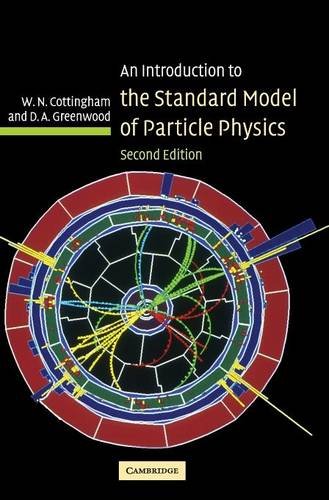An Introduction to the Standard Model of Particle Physics book download
Par meurer judith le lundi, juin 13 2016, 23:46 - Lien permanent
An Introduction to the Standard Model of Particle Physics by D. A. Greenwood, W. N. Cottingham


An Introduction to the Standard Model of Particle Physics D. A. Greenwood, W. N. Cottingham ebook
Publisher: Cambridge University Press
Page: 294
ISBN: 0521852498, 9780521852494
Format: pdf
The standard model of particle physics is a model (in particle physics): a quantum field theory that describes the fundamental particles currently experimentally known, containing. The standard model is the name given in the 1970s to a theory of fundamental particles and how they interact. The fact that they aren't (we wouldn't be here if they were!) obviously required an explanation, which was the motivation for a series of papers introducing the Higgs field. The unification between the general theory of relativity and the standard model of particle physics is one of the most important problems in theoretical physics [1]. Besides a long review of Frank Close's The Infinity Puzzle, there are some short reviews, including one for Stephen Heywood's Symmetries and Conservation Laws in Particle Physics: An Introduction to Group Therapy for Particle Physics. Matter: electrons, neutrinos, quarks and other fermions,. To drastically oversimplify matters, this mechanism was incorporated into the so-called Standard Model of particle physics and quickly became an essential feature of it. I've always intended someday to try and write something like that, basically an explicit mathematical description of the standard model, aimed at mathematicians completely familiar with the technology of differential geometry. The result will help experimentalists to scrutinize the Standard Model of particle physics at accelerators such as CERN's Large Hadron Collider and Fermilab's Tevatron. Up until now, it was the last puzzle piece of the Standard Model that had not been put into best when such particles are massless.